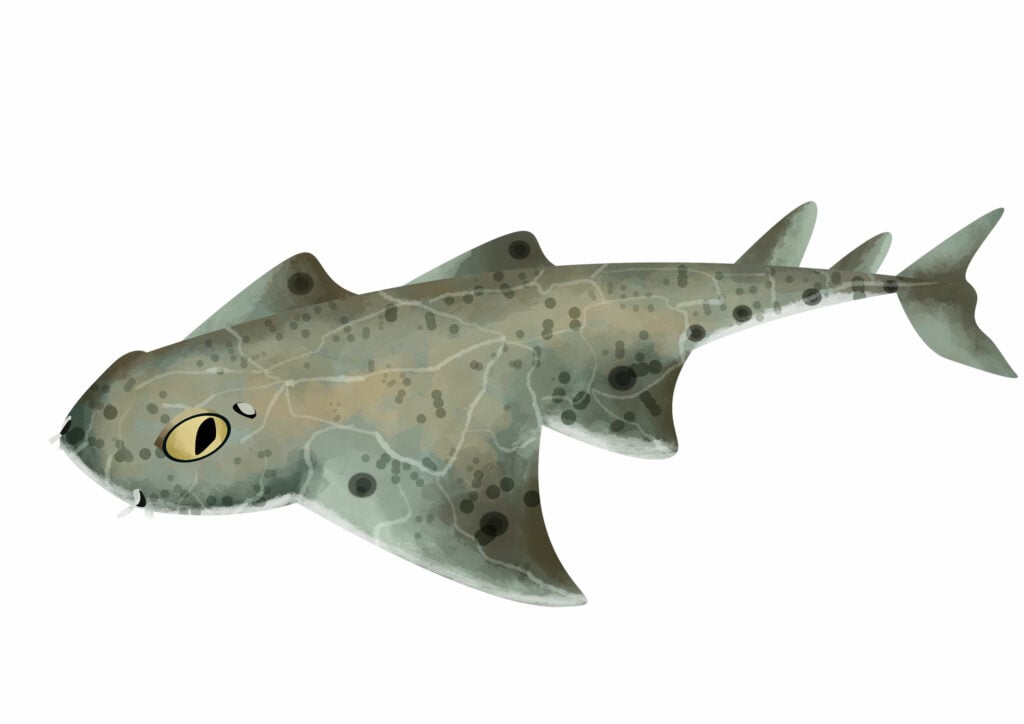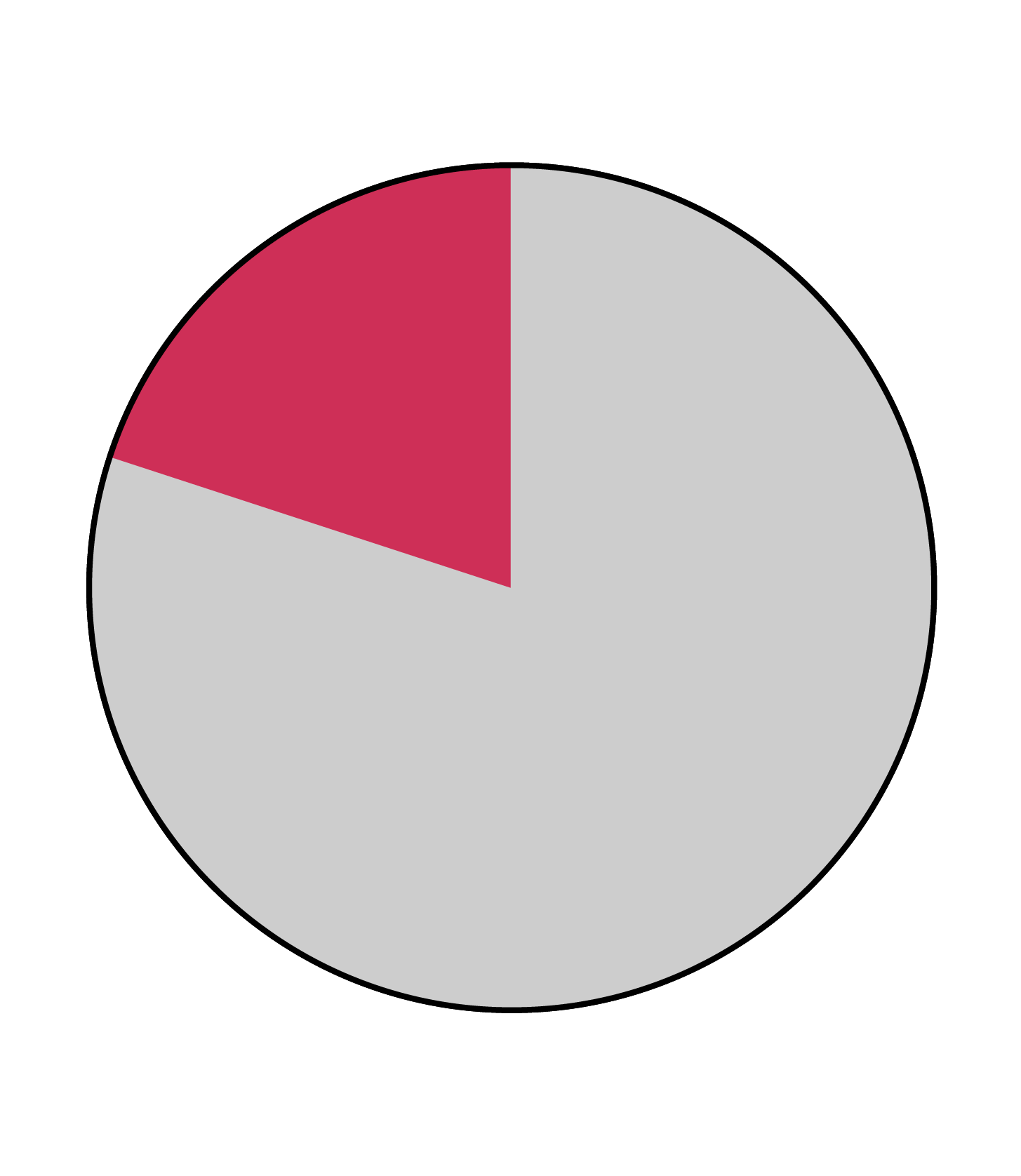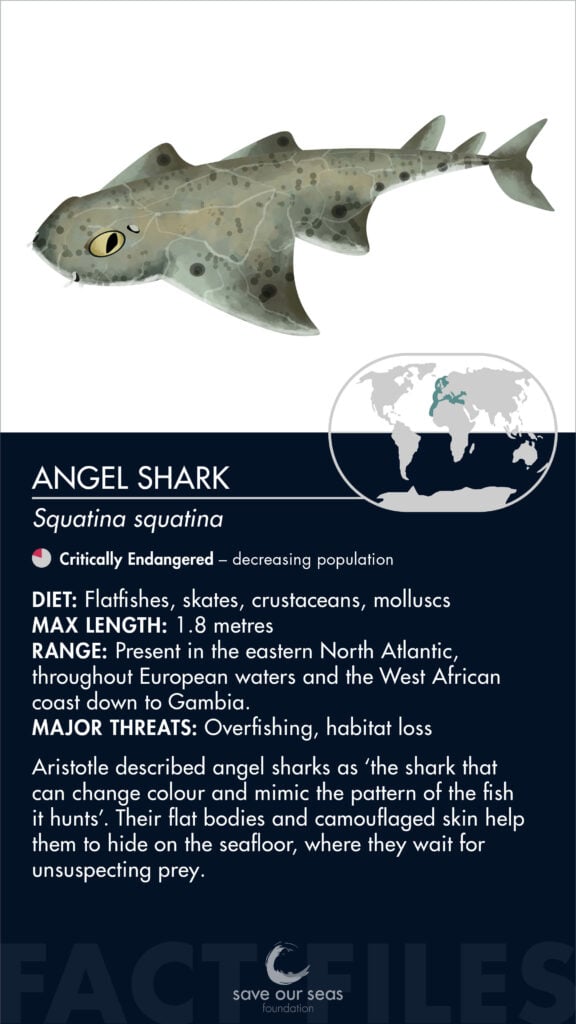Angel Shark
Squatina squatina



There are at least 24 species of angel shark making up the family Squatinidae, which is the third most threatened family of elasmobranchs (sharks, skates and rays) after wedgefish and sawfish. Despite looking more like rays, angel sharks are identified as sharks by the placement of their pectoral fins and gills. In skates and rays, the gills are always found below the pectoral fins, whereas in sharks the gills are always above the pectoral fins. Aristotle described them as ‘the shark that can change colour and mimic the pattern of the fish it hunts’. Their flat body and camouflaged skin help them hide on the seafloor, where they wait for unsuspecting prey.
Identification
Angel sharks have flat bodies with broad, winglike pectoral fins that make them resemble skates and rays. They have a mottled, brown/grey colouration that helps them blend in with the sand. The eyes on the top of their head are positioned above the sand they lie in, and both of their dorsal fins are near the back of their tail.

Special behaviour
Angel sharks are able to wait camouflaged on the seafloor for passing prey for extended periods, but can strike within a tenth of a second to catch any prey that ventures too close.
Reproduction
Angel sharks are ovoviviparous, which means that after internal fertilisation eggs develop and hatch internally, with the embryos sustained by a yolk sac. Live young are then born free swimming and self-sufficient. Angel sharks are difficult to age as they do not develop vertebral rings annually, but they are slow growing (± 8 cm per year) and only mature at lengths of around 1.2 m.
Habitat and geographical range
Angel sharks are typically found in shallow, coastal habitats, often in sand or mudflats of less than 5 m, in the eastern North Atlantic, throughout European waters and the West African coast down to the Gambia. Lagoon and seagrass habitats also appear to be important to this species. However, their current distribution appears to be largely reduced from this historic range. Although they are still sighted regularly in the Canary Islands, they are now considered locally extinct in the North Sea.

Diet
Angel sharks are ambush predators, lying in wait, camouflaged, to strike prey that comes in range. Their diet appears to consist primarily of flatfish, but there is also some regional variation. For instance, in the Mediterranean, they feed additionally on hake, mullet, crabs and squid. In the Canary Islands, bony fish and squid are dominant in their diet.
Threats
Angel sharks are considered Critically Endangered, primarily due to being caught as bycatch in trawl and setnet fisheries. Their slow reproduction and restricted movements make them highly susceptible to rapid local declines. Historically their meat was also valued in Europe, where it was referred to as ‘white tuna’. Once abundant throughout their range, declines are now so severe that the last angel shark recorded in the North Sea was in 1966.
Relationship with humans
Angel sharks’ relationship with people has primarily been one of exploitation. However, in a few remaining refuges such as the Canary Islands, there is a burgeoning ecotourism trade around diving and snorkelling with them. They are generally placid and reliably observed. There is also increasing recognition of the severe population declines and urgent need for effective conservation measures. They are now listed on both Appendix I and II of CITES, which severely restricts international trade.





Fun Facts
Angel sharks lie camouflaged in the sand, patiently waiting to strike unsuspecting prey. They can wait for days but strike passing prey within a tenth of a second.
Their colour patterns and body shape allow them to lie flat and camouflaged on the sand. They can pump water over their gills, allowing them to remain perfectly still.
There are at least 24 species of angel shark making up the family Squatinidae, which is the third most threatened family of elasmobranchs (sharks, skates and rays) after wedgefish and sawfish.
References
David A. Ebert. et al, 2021, Sharks of the World: A Complete Guide.
IUCN Red List of Threatened Species, Squatina squatina.
Britannica, 2021, Angel Shark
National Oceanic & Atmospheric Administration, 2021, Common angelshark
Weigmann, S.; Vaz, D.F.B.; Akhilesh, K.V.; Leeney, R.H.; Naylor, G.J.P. Revision of the Western Indian Ocean Angel Sharks, Genus Squatina (Squatiniformes, Squatinidae), with Description of a New Species and Redescription of the African Angel Shark Squatina africana Regan, 1908. Biology 2023, 12, 975. https://doi.org/10.3390/biology12070975


